When exploring our bodies of water, kayaks and paddleboards are two of the most popular methods. But, for speed junkies, the debate on which one can get you from point A to point B the fastest is an important one to be had.
So, which is faster – a kayak or a paddleboard?
In this article, we’ll finally put the debate to rest. We’ll not only tell you which one’s faster but also how to paddle faster in both of them.
Table of Contents
Which Is Faster, Kayak or Paddleboard?
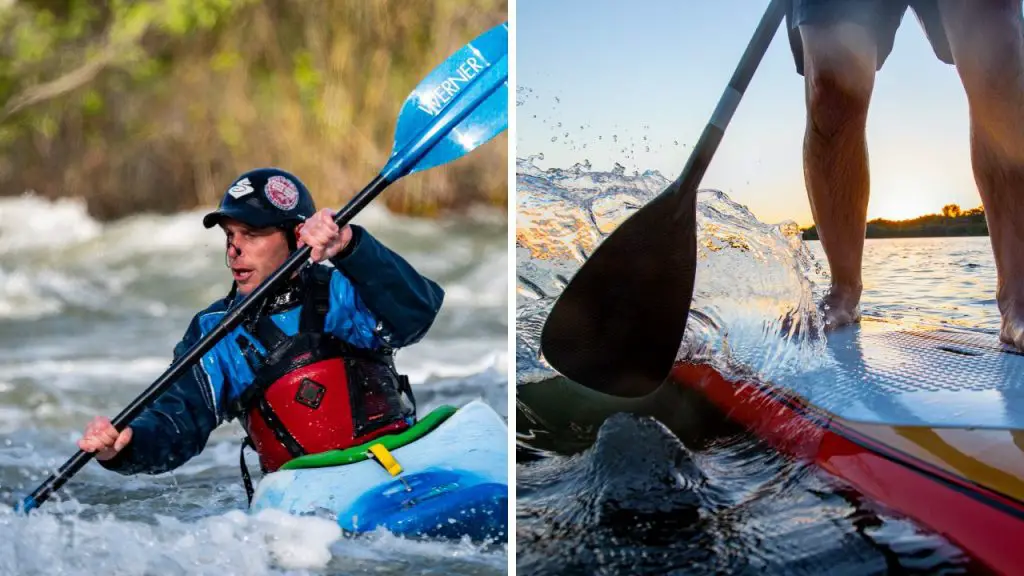
Kayaks are generally faster than paddleboards for a variety of factors. One of the most important ones is that they were designed to have displacement hulls that cut through the water, making it much easier to glide across waves and currents.
On the other hand, most paddleboards are designed to float above the water’s surface in a phenomenon called hydroplaning. This makes them a bit slower than kayaks, especially in choppy conditions.
However, this debate is made more complicated because some paddleboard designs are starting to catch up to the speeds attainable by the kayak. A racing paddleboard, for example, also features water displacement hulls and can, therefore, be theoretically just as or even faster than kayaks.
How Fast Can You Go on a Paddleboard?
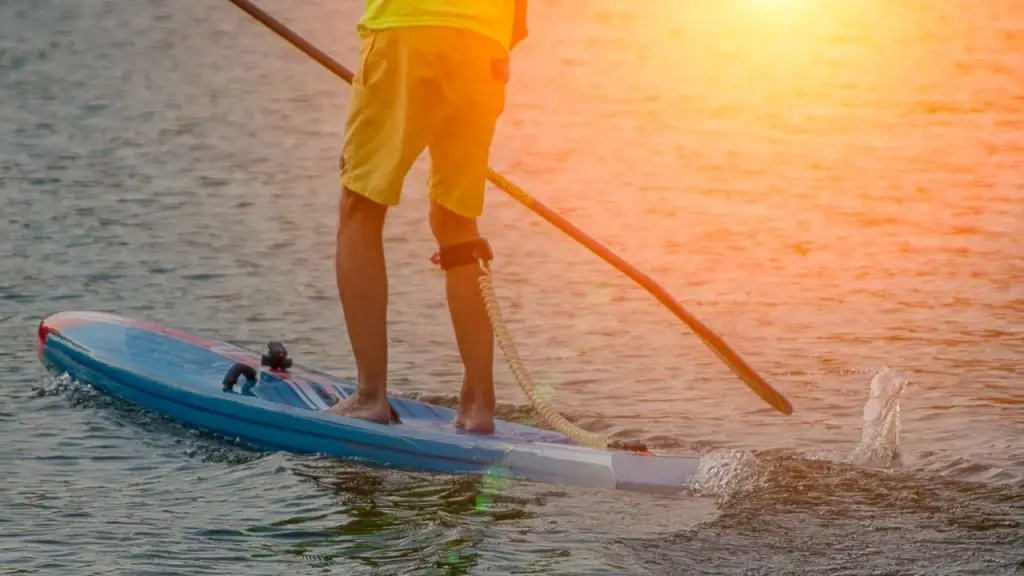
Aside from the paddler’s fitness level and technique, the speed of your paddleboard will also depend on the water conditions.
For example, a paddleboard can reach speeds up to 12 mph in flat water with no wind. But your top speed will be significantly affected in choppier water or with strong winds.
Experienced paddleboarders can also reach high speeds using a technique called “drafting.” This is when you get behind another object in the water and use it to cut through the wind resistance for you.
You can draft behind other paddleboards, kayaks, boats, or large rocks. You can also use the wind to your advantage on a paddleboard to propel you forward using your body as a sail.
| Experience | Speed of Paddleboard | 1 Mile Time |
| Beginner | 2-3mph | 30 – 20 Minutes |
| Intermediate | 3-4mph | 20 – 15 Minutes |
| Experienced | 4-5mph | 15 -12 Minutes |
| Professional | 5-7mph | 12 -8.5 Minutes |
Bluefin Cruise SUP Package | Stand Up Inflatable Paddle Board
How Fast Can You Go on a Kayak?
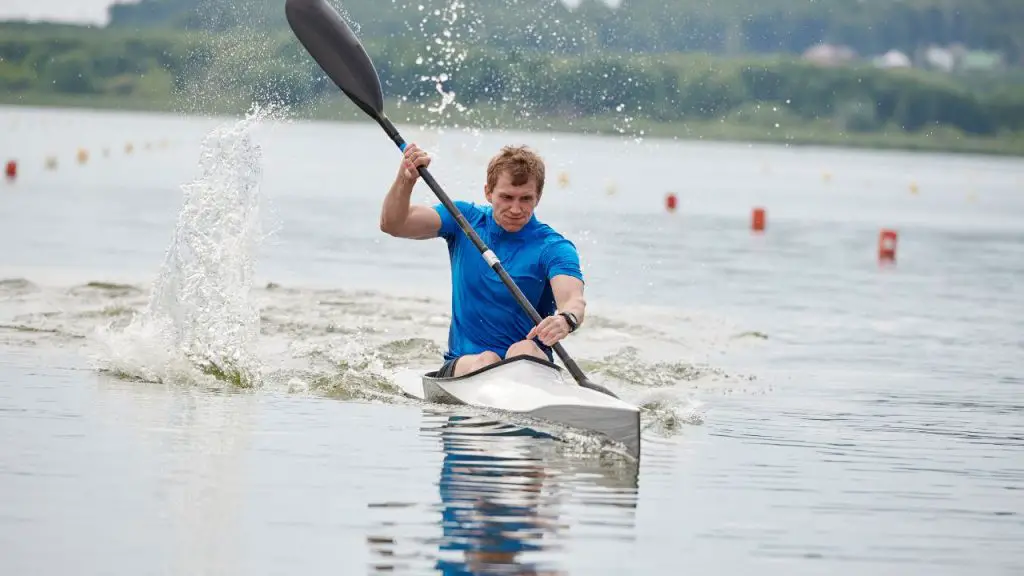
Kayaks have been around for a long time, so the design has been improved and perfected over the years. This is why this watercraft can reach impressive speeds. In general, kayaks can reach speeds up to 14 mph in calm water conditions.
Of course, as with paddleboards, the speed of your kayak will also be affected by factors like the paddler’s fitness level and technique. Paddleboards are just naturally much less effective in combating wind resistance, making kayaks generally faster.
| Experience | Speed of Kayak | 1 Mile Time |
| Beginner | 3-4mph | 20 – 30 Minutes |
| Intermediate | 4-5mph | 15 – 12 Minutes |
| Experienced | 5-6mph | 12 – 10 Minutes |
| Professional | 6-8mph | 10 – 7.3Minutes |
Advanced Elements AirVolution Inflatable Kayak with Roller Bag and Pump
Kayak or Paddleboard: What Makes a Kayak Faster?
All kayaks have a more efficient shape as a displacement hull, giving them a huge advantage. River currents and waves, therefore, don’t affect kayaks as much as paddleboards.
The kayak’s displacement hull also makes it easier to move through the water with less resistance, even under load. In addition, most kayaks also have two paddles which means that you can generate more power and, therefore, more speed.
Finally, because kayaks sit lower in the water, they are less affected by wind resistance. This means you can paddle faster in a kayak, even with a strong wind.
What Determines Paddling Speed?
The speeds attainable through paddling depend on a lot of different factors. These include the hull design, load, and the paddler’s fitness level and technique.
Design
The hull design is probably the most important factor that determines paddling speed. The displacement hull is the most crucial aspect of the kayak’s speed advantage over paddleboards. This enables the kayak to cut through the water rather than float on top of it.
However, if you’re on a loaded kayak, it’s going significantly affect the speed. A loaded kayak will be much slower than an unloaded one because there is more resistance.
On the other hand, a paddleboard’s speed is not affected as much by a load because they are designed to float on top of the water. This means that a loaded paddleboard will be only slightly slower than an unloaded one.
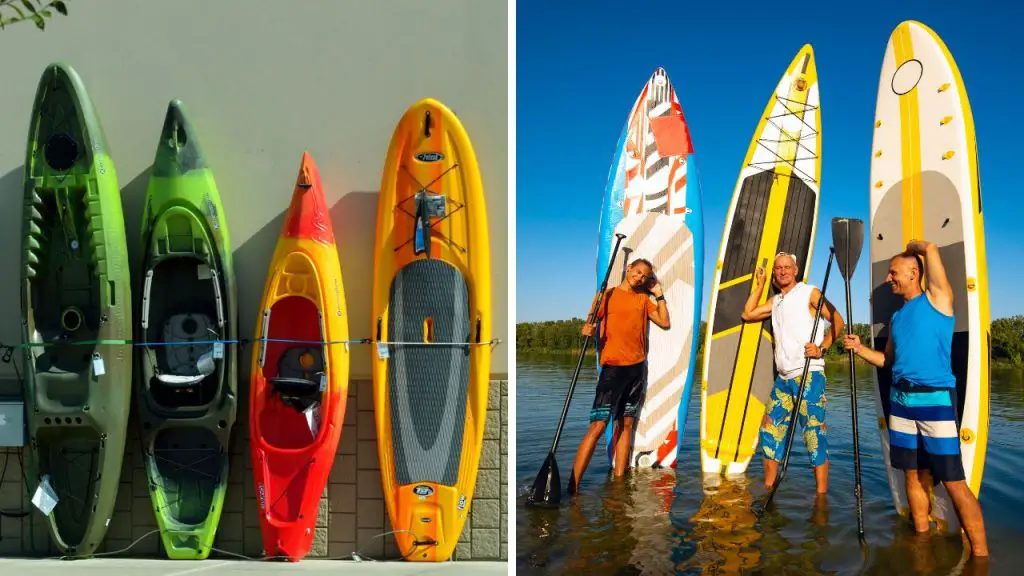
Roadmap
External conditions such as water conditions, wind speeds, and distance can also play a part in a paddler’s overall speed.
For example, if there is no wind and the water is flat, then both kayaks and paddleboards can reach speeds up to 12 mph. However, if the water is choppy or there are strong winds, the kayak has the advantage because of its overall design.
Drafting can also significantly increase speeds and ease of paddling. It’s especially useful when you’re travelling in a group.
Distance is also important. The energy expenditure that paddleboards require is a bit more than kayaks as it requires you to stand for the whole duration with all the major muscle groups involved in the activity.
In kayaking, on the other hand, you’re in a seated position with just your core and arms doing all the work saving you more energy in the long run. So, if it’s a long race, a kayaker may be able to beat a paddleboarder just because they can sustain their speeds for longer.
Stability
Kayaks are generally more stable than paddle boards because you must sit inside them. This gives you a lower centre of gravity and makes it harder to tip over. Typically, kayakers go beneath waves to get through.
On the other hand, the ability to stand and move around on the paddleboard makes it easier to make adjustments while you’re gliding across the water.
Paddleboards are at a disadvantage in choppy water because they tend to rise above the waves and currents. This means the slightest wave can suddenly shift the watercraft’s balance. For inexperienced or inattentive paddlers, this can easily get them thrown off the vessel.
However, paddleboards are also not stable in windy conditions. The wind can easily catch a paddle boarder unaware. Thus, a sudden strong gust of wind can blow a paddle boarder off his craft.
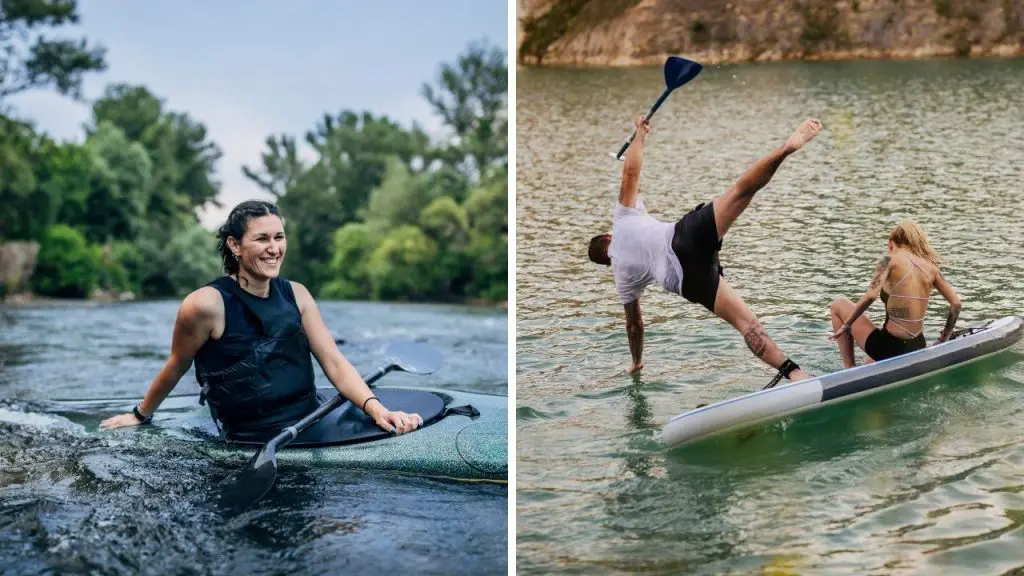
Skill Level: Paddling Technique
Generally, it’s easier to learn how to use a paddleboard than a kayak. These days, most people use paddle boarding as a gateway into the paddling world. Once you’ve learned the basics of how to stand up and paddle on a board, you can then move on to a kayak.
However, just because it’s easier to learn doesn’t mean it’s necessarily easier to master. Paddleboards are less stable than kayaks, which means that they require more skill and technique to control.
In addition, because you’re standing up on a paddleboard and using all your major muscle groups to move the watercraft, you’re more likely to get tired quickly.
So, while it may be easier to learn how to paddleboard, it’s not necessarily going to be the best choice if you’re looking for speed. Kayaks, even the recreational models, are faster and require less energy to paddle, so they’ll be the better choice if your main concern is speed.
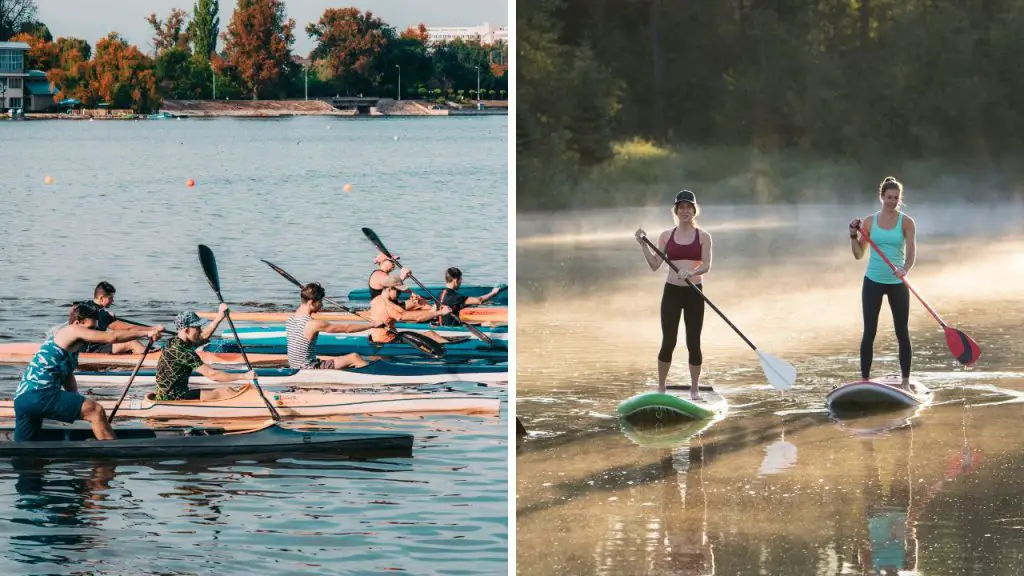
Strength and Endurance
Paddle boarding is a great full-body workout because you use all the major muscle groups in your arms, legs, and core. However, kayaking requires less energy overall because it is a seated activity.
This means that if you’re looking for a workout, paddleboarding is the way to go. But kayaking will be the better option if you’re trying to break your top-speed paddling records.
FAQs
Where should the paddler sit on a paddleboard?
The paddler should sit near the centre of the paddleboard with their feet hip-width apart.
Can fat people go paddleboarding?
One of the best things about paddleboarding is that it’s not sensitive to the paddler’s weight as long as they’re properly centered.
How much weight can a 12 ft paddleboard hold?
A 12 ft paddleboard can easily hold 500 lbs.
Do paddleboards tip over easily?
They’re not the most stable forms of transportation, and they can tip over pretty easily in choppy waters. In calm waters, however, it’s fairly stable, and beginners can easily get the hang of it within a couple of minutes of practice.
Wrapping Up: Which Is Faster Kayak or Paddleboard?
The short answer is that kayaks are generally faster than paddleboards. They were made for speed, and their design has been perfected over centuries of use by the whale hunters of North America.
They’re more efficient in calm water and require less energy to paddle. However, paddleboarding is the way to go if you’re looking for a workout because it’s a full-body activity.
Paddleboards are also easier to learn. If you’re just starting out in the world of paddling, a paddleboard is a great way to get your feet wet. But if you’re looking for speed, kayaking is the better option.


